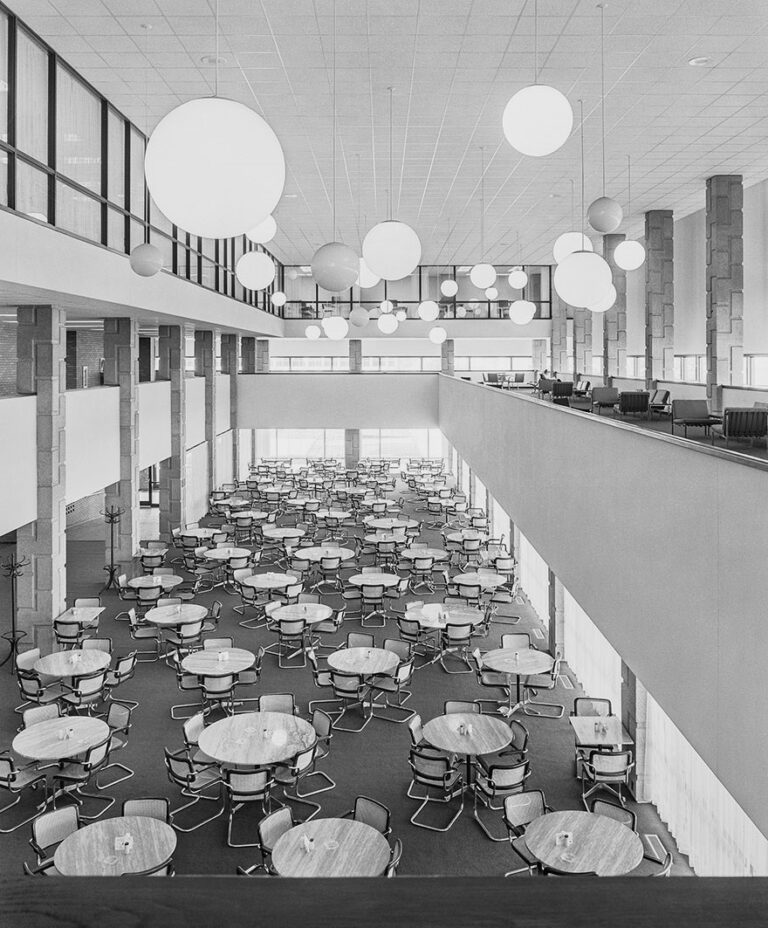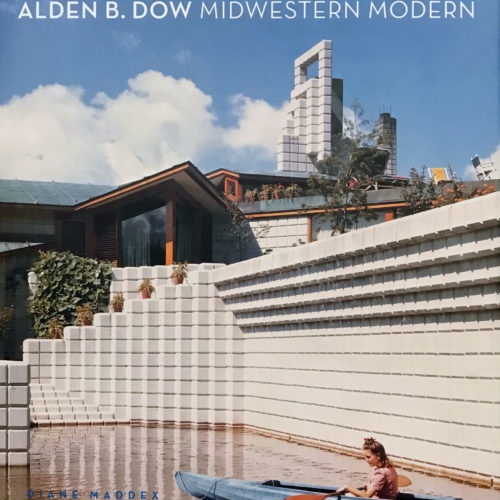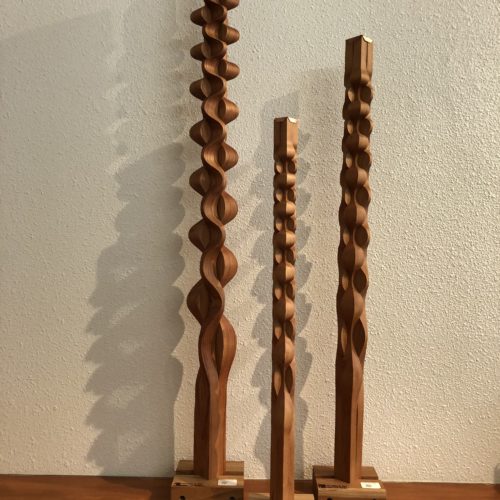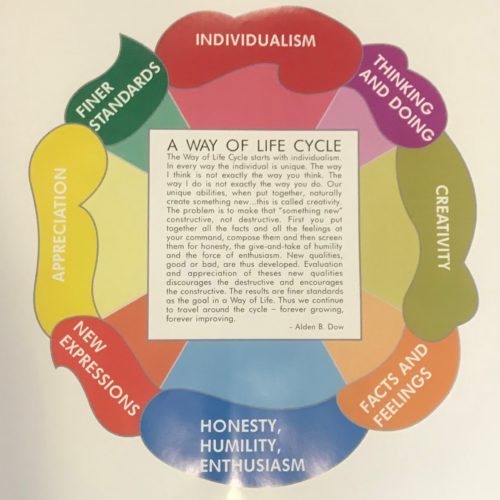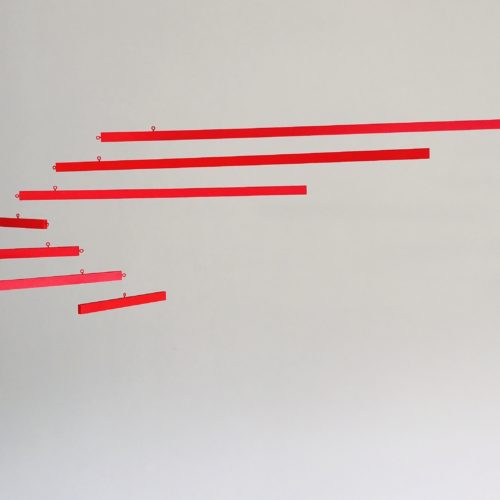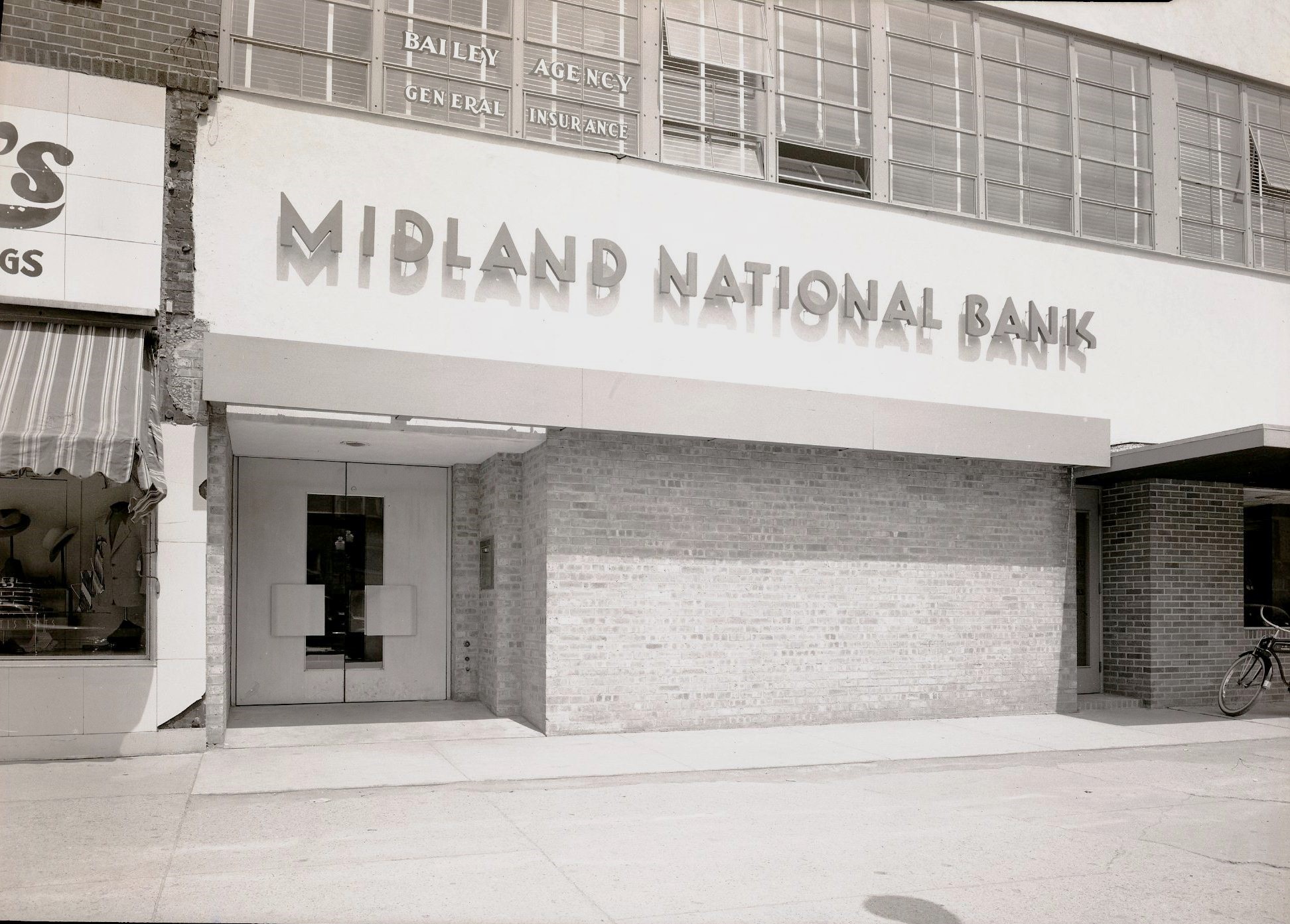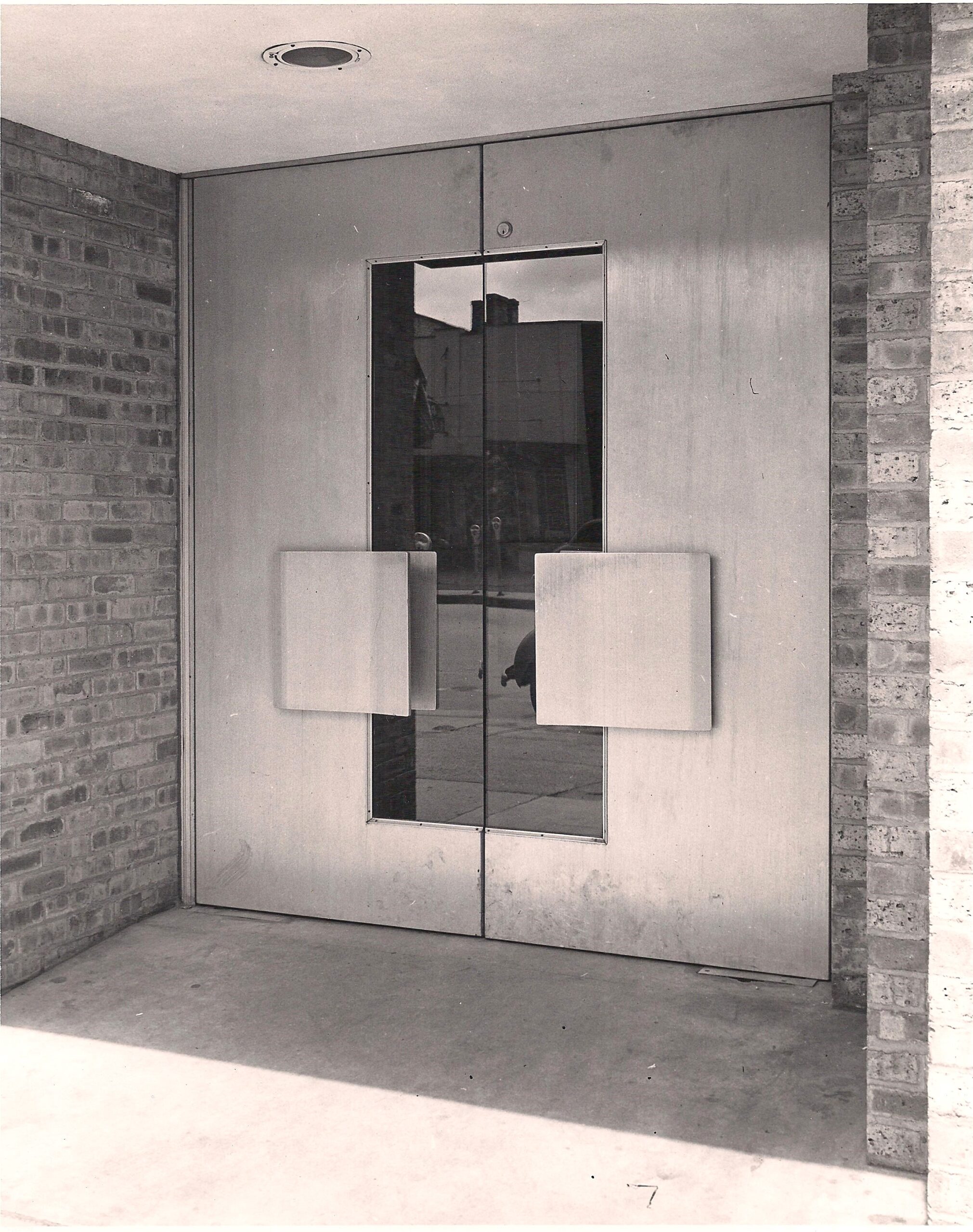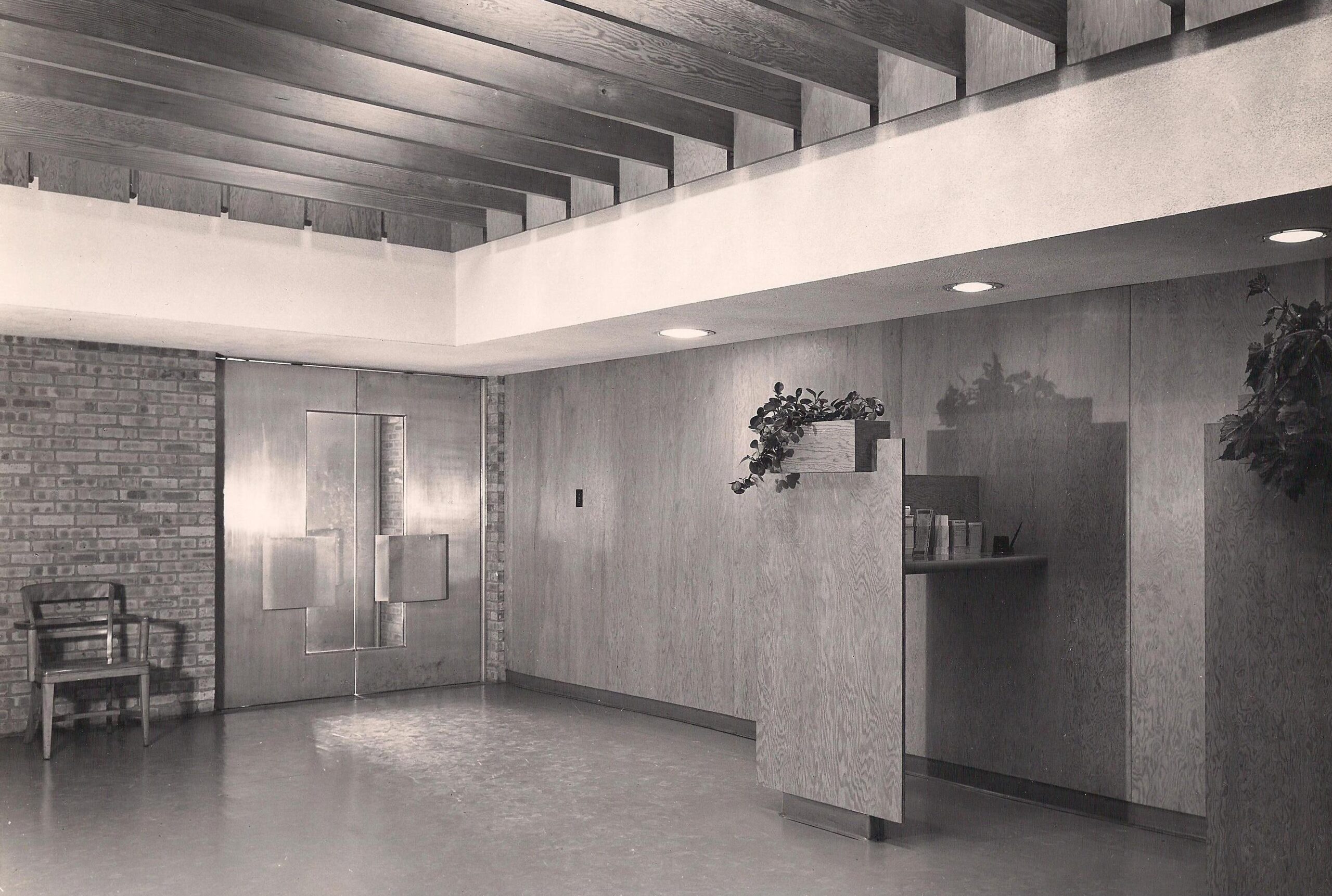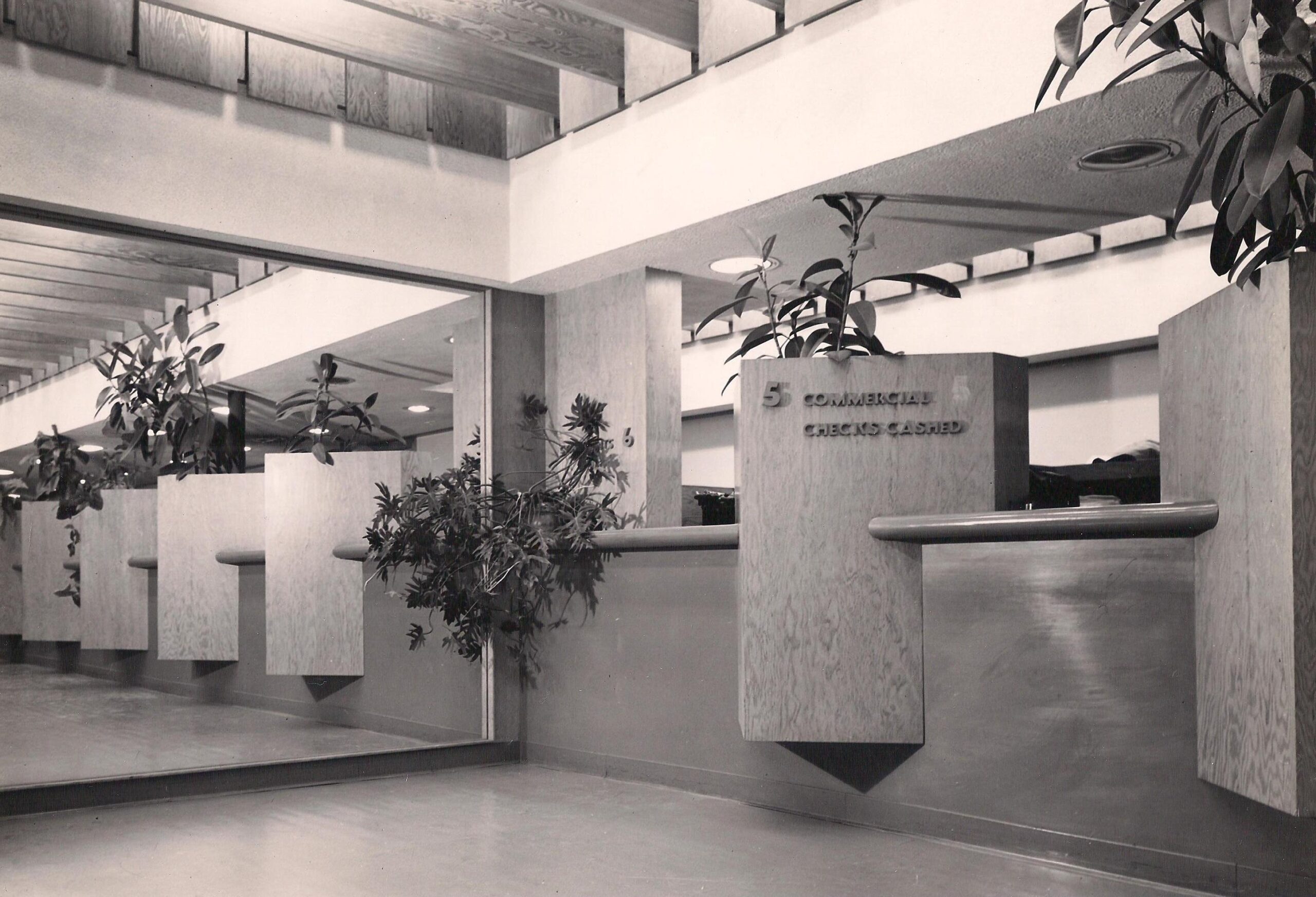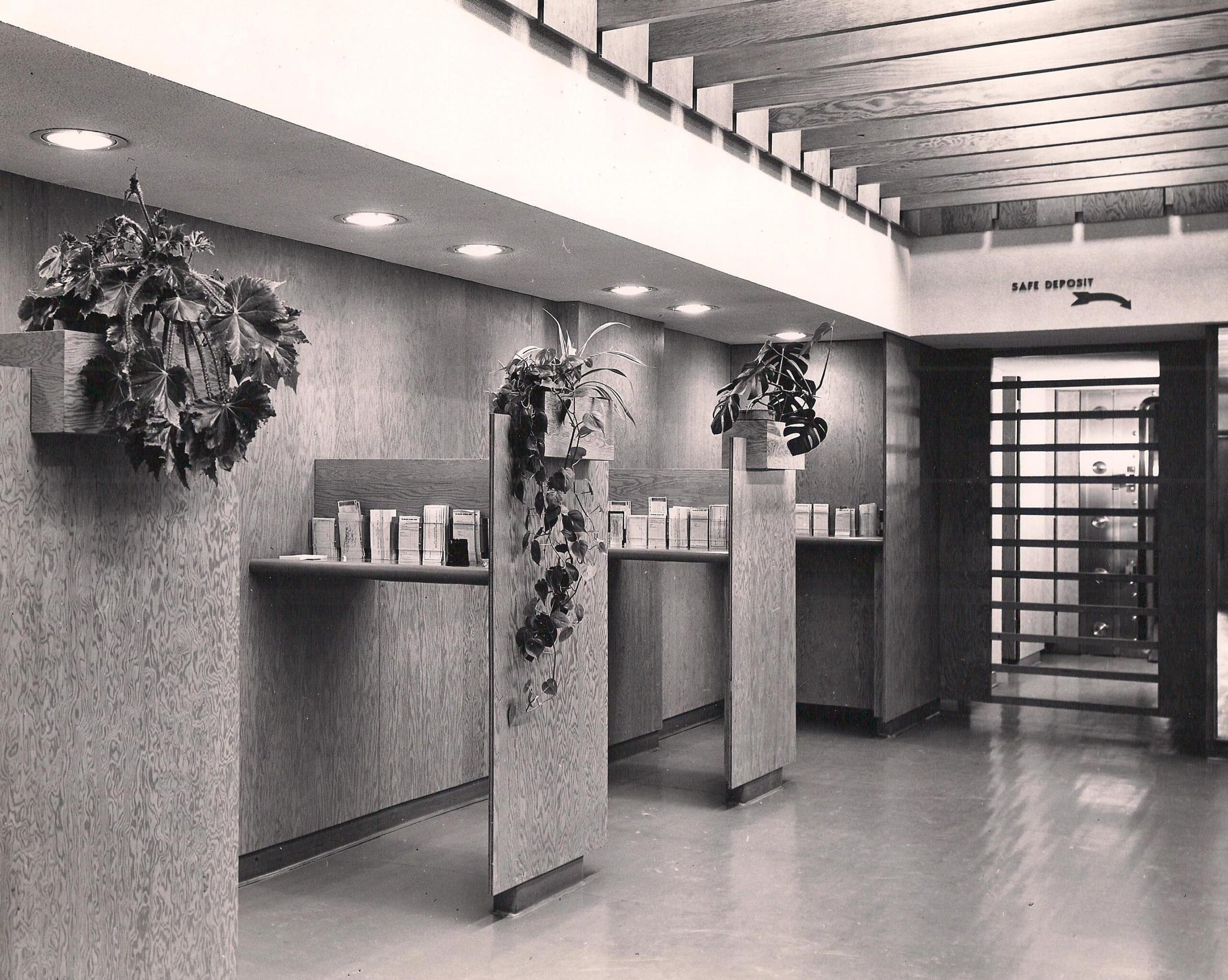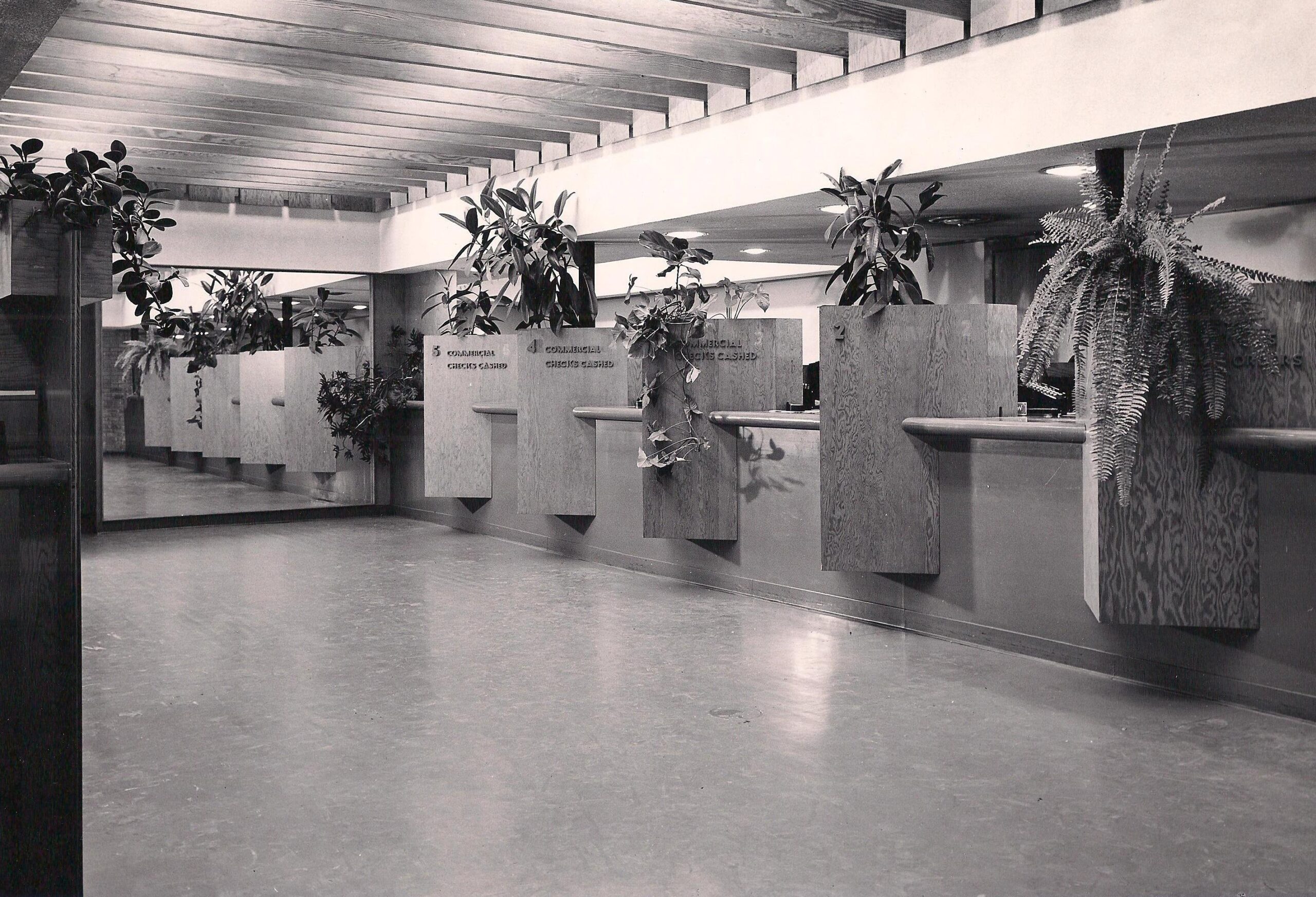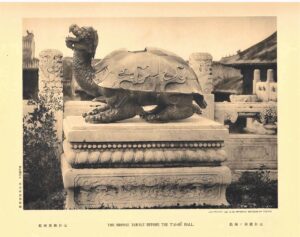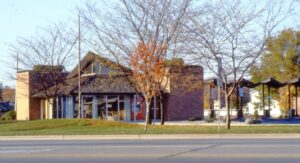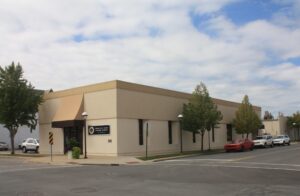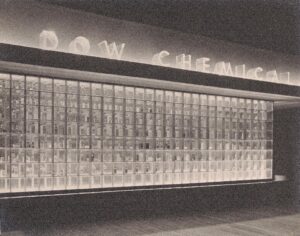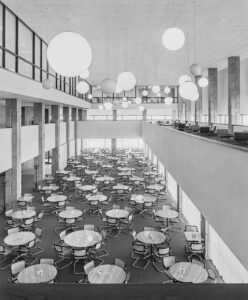An enterprising group of businessmen first began discussing plans to establish the Midland National Bank, a locally owned banking institution, in 1945. Following federal approval of their application the following year, they proceeded to acquire the Chemical City Restaurant building at 133 E. Main Street for the location of the new bank. A contract was signed with Alden B. Dow on May 28, 1947 “to repair and alter the building, including construction of new bank vaults and remodeling of the interior for banking and rental purposes, and installation of new plumbing, ventilation, and electrical wiring systems.” Freeman and Shepherd of Midland served as general contractors for the project.
The two-story building featured a continuous band of tall windows on the upper level flanked above and below by wide plaster friezes. The lower frieze prominently displayed the name of the bank in raised letters. Just below the name stretched a plywood flower box. A solid brick wall ran along the sidewalk with a recessed entrance at one end.
Entrance to the bank, a Midland Daily News article noted, was through the first Dowmetal doors ever made outside the experimental stages. Dowmetal was a magnesium alloy known for its lightness and durability, as well as its use in war materials. Once inside the bank, customers could fill out deposit slips or endorse paychecks in the nine booths on the left side of the lobby and then take them to any of the six teller stations on the opposite side.
A priority was placed on customer privacy in the design of the teller stations, which were separated by triangular partitions. The tops served as bases for leafy potted plants to shield one’s transactions from the view of others. In a room off the lobby, there were three private booths for safety deposit box holders. Another convenient feature was a night depository.
Vertical grain fir plywood was used extensively throughout the interior. Fluorescent overhead lighting was camouflaged by exposed plywood joists. The floor and countertops were made of red linoleum. A large floor to ceiling mirror at the far end of the lobby made the interior space feel larger and appeared to magically multiply the number of teller stations.
Did you know? Appointments are welcome to view or study any of the Archives materials featured in this post and can be arranged by contacting us at archives@abdow.org.

